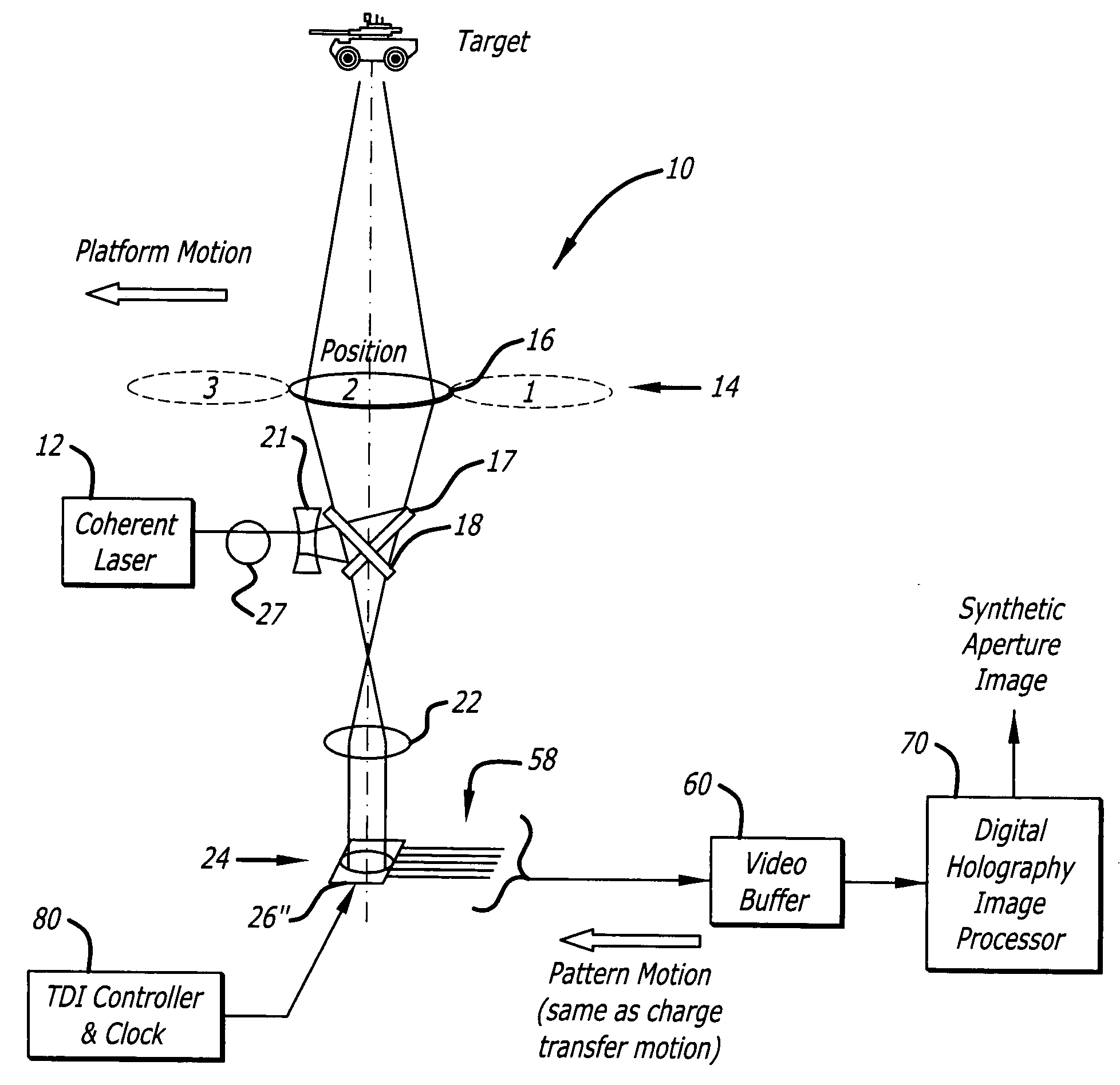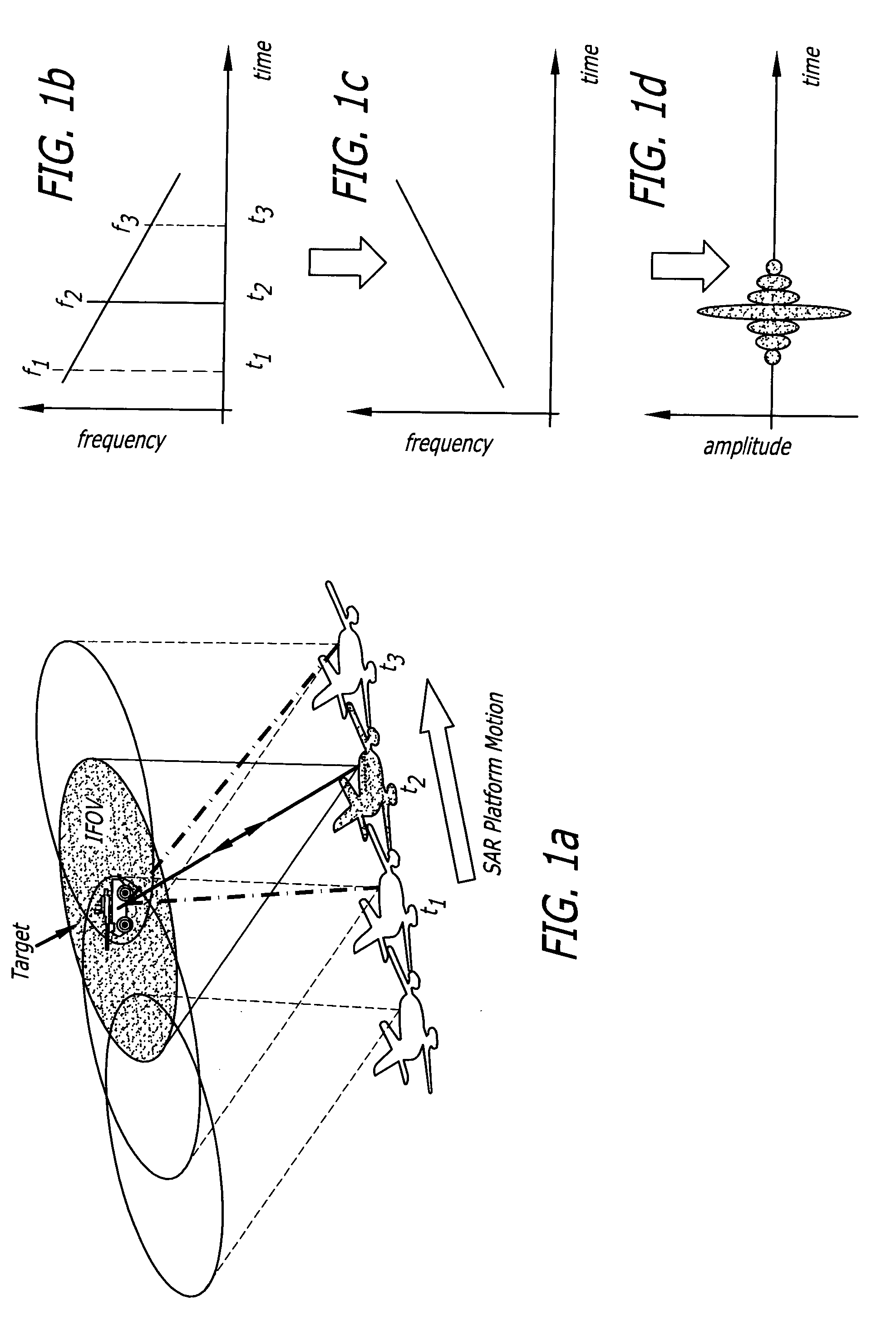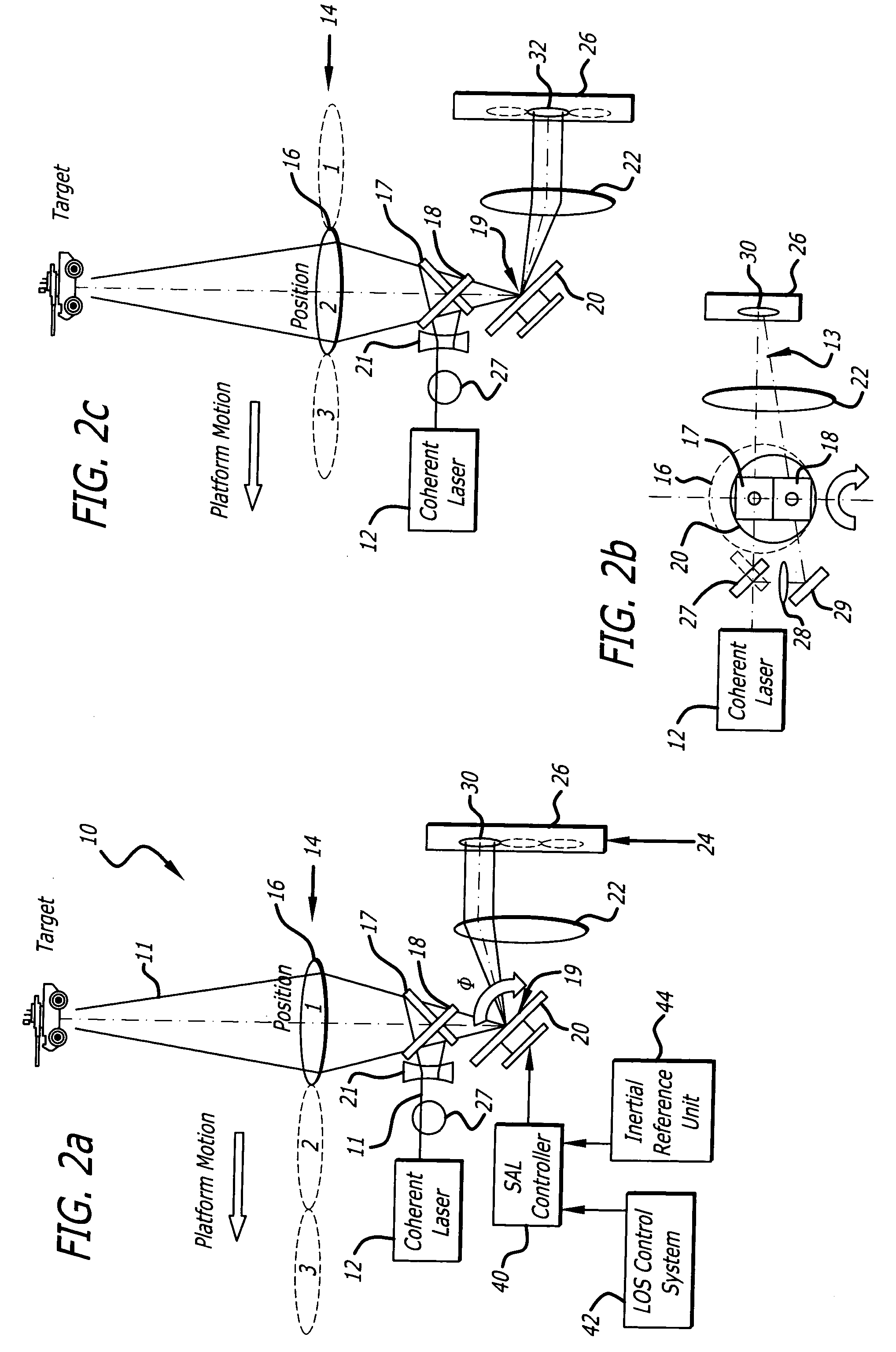Synthetic aperture ladar system and method using real-time holography
a technology of real-time holography and synthetic aperture ladar, which is applied in the field of target tracking and imaging systems, can solve the problems of increasing the required sensitivity several orders of magnitude, complex and expensive solar system for many current and future applications, and difficult to implement at optical wavelengths
- Summary
- Abstract
- Description
- Claims
- Application Information
AI Technical Summary
Benefits of technology
Problems solved by technology
Method used
Image
Examples
Embodiment Construction
Illustrative embodiments and exemplary applications will now be described with reference to the accompanying drawings to disclose the advantageous teachings of the present invention.
While the present invention is described herein with reference to illustrative embodiments for particular applications, it should be understood that the invention is not limited thereto. Those having ordinary skill in the art and access to the teachings provided herein will recognize additional modifications, applications, and embodiments within the scope thereof and additional fields in which the present invention would be of significant utility.
The objective of a synthetic aperture ladar (SAL) is to synthetically increase the effective aperture of the laser radar in order to increase the azimuth resolution of the image. The theory of operation of a traditional synthetic aperture radar or ladar based on coherent processing of the Doppler-shifted return signal is shown schematically in FIGS. 1a-c.
F...
PUM
 Login to View More
Login to View More Abstract
Description
Claims
Application Information
 Login to View More
Login to View More - R&D
- Intellectual Property
- Life Sciences
- Materials
- Tech Scout
- Unparalleled Data Quality
- Higher Quality Content
- 60% Fewer Hallucinations
Browse by: Latest US Patents, China's latest patents, Technical Efficacy Thesaurus, Application Domain, Technology Topic, Popular Technical Reports.
© 2025 PatSnap. All rights reserved.Legal|Privacy policy|Modern Slavery Act Transparency Statement|Sitemap|About US| Contact US: help@patsnap.com



